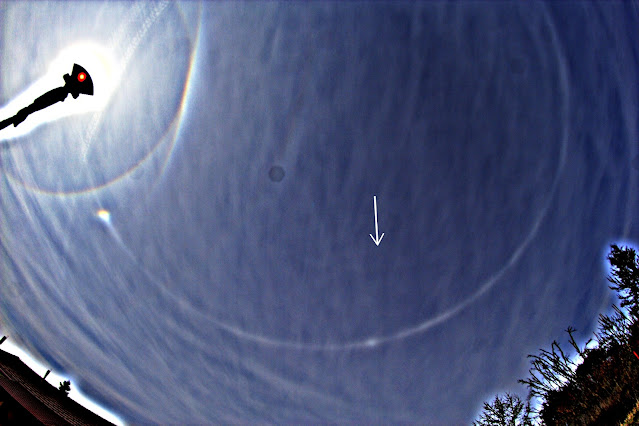Finally, double/triple CZA, a.k.a the Jensen arcs ( https://thehalovault.blogspot.com/2020/04/new-halo-triple-cza-jensen-arcs-in.html ), made a debut in China. On Sep 27, LING Xiaoyun caught them with her iPhone in Zhangye, Gansu province.
 |
| Captured at 09:20:14 UT, when the secondary CZA below the main one was most prominent. Sun elevation 20.0°. |
 |
| Captured at 09:21:16 UT. The secondary CZA had somewhat faded. Sun elevation 19.8°. |
The secondary CZA is also visible through the ultra wide lens.
 |
| Catpured at 09:19:33 UT. Sun elevation 20.2°. |
She even managed to grab a super close-up shot placing her iPhone behind a pair of 10x50 binoculars.
 |
| Captured at 09:20:44 UT. Sun elevation 19.9°. |
When enhanced, a third CZA pops up above the main CZA in some of the close up shots. There's also the slightest hint of a fourth CZA below the secondary CZA.
 |
| The 09:20:14 UT shot processed. USM above, USM + BGR below. |
It should be noted though modern smartphone data are prone to artifacts introduced by HDR and other algorithms, so processed results should be taken with a grain of salt.
Assuming the third CZA above the main one is real, it can be explained by some new models proposed after Jensen arcs' discovery.
Diffraction model:
Nicolas Lefaudeux suggests that the Jensen arcs would be caused by diffraction through prism faces of thin plates. For this to happen, the crystals need to be both thin and have homogeneous thickness. It is the same physics as diffraction through a slit and diffraction corona around the sun.



















